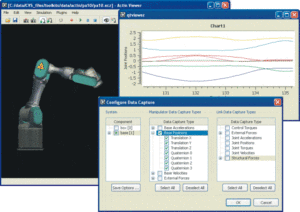Energid Technologies Corporation, a developer of robotic systems and technologies, has announced that NASA has provided the company with funding to develop a new robot simulation that accommodates uncertainty and discovers exceptional behaviors during mission planning.
Even in the best case when they are well understood, conditions on lunar and planetary surfaces can be hard to duplicate physically. This makes digital simulations an essential tool during mission planning and development. Simulation software can be used to study the effects of changes in terrain, lighting, reflectance, and other environmental factors on mission success.
In a typical space mission, though, many conditions are poorly understood. There may, for example, be limited understanding of soil—or regolith—properties before contact on a lunar mission. Addressing this requires special conceptual and mathematical tools. Parameters must be randomized to capture potential outcomes, and results must be optimized to discover the corner cases and unexpected outcomes that could impact a mission.
“Our approach is to apply concepts from game theory and stochastic optimization to deeply simulate NASA’s robotic missions,” said Ryan Penning, project manager on the program. “The result will be a breakthrough ability to reason about uncertain environments and understand the extremes of what a robot can do.”
Energid Technologies, through its Actin software, brings enabling tools and capability to the project. Actin supports randomizing simulations of all types of robotic systems. It has physics-based models for articulated dynamics, contact dynamics, sensor simulation, and communications. In this effort, Actin, and its stochastic simulation capability, will be extended to specialize this capability for new NASA space applications.
Actin will be tailored to the space environment by modeling lunar regolith with highly parallelized particle models implemented on Graphical Processing Units (GPUs). GPUs allow execution of high-fidelity simulation in real time on common computer hardware. Actin will also be tailored to support the appearance of lunar and planetary surfaces. This will allow high fidelity simulation of cameras and other sensors.
“Actin already provides powerful tools for camera, lidar, radar, and other sensors on all types of robots, from oil exploration to collaborative manufacturing,” said James English, CTO at Energid. “This project will enable high-fidelity extensions for space environments.”
The technology will be further commercialized by applying it to configure robotic systems and workcells on Earth. There is a pressing need for easier robotic programming to lower costs and empower people and businesses untrained in robotics but familiar with application domains where robots can contribute.
“Much of the cost of applying robots lies in configuring environments and workcells,” said Neil Tardella, CEO at Energid. “The prediction and simulation technology developed under this project will lower the cost of fielding robots and expand their application.”



















